Are you tired of repeating the same exercises during your workout routine? Do you feel like you have plateaued and need a way to switch things up? One exercise that can help you break through that plateau and get the results you are looking for is the resistance band standing rows. As fitness enthusiasts, we all experience burnout and boredom with our routines from time to time, and that’s okay! The good news is that there are always new exercises that can challenge us and help us reach our fitness goals. In this post, we’ll dive into the benefits of resistance band standing rows and provide tips on how to properly perform this exercise to take your workout to the next level.
Resistance Band Standing Rows Summary
- Primary Muscles: Deltoid – Posterior
- Secondary Muscles: Brachialis, Brachioradialis, Erector Spinae, Infraspinatus, Latissimus Dorsi, Pectoralis Major – Sternal, Rhomboids, Teres Major, Teres Minor, and Trapezius
- Equipment: Resistance Band and Door Anchor
- Mechanics Type: Compound
- Force: Pull
- Utility: Basic or Auxiliary

Resistance Band Standing Rows Instructions
- Attach the resistance bands to a secure anchor point close chest level. If you can’t get an anchor point level with your chest, you will want to make your back straight and perpendicular to the line the band will make.
- Grab the band handles and step back with you arms extended until the bands are under tension.
- Now perform the rows by pulling your arms and bringing your elbows back to your side. The handles should come close to touching your chest.
- Then, slowly release your arms back to the starting by allowing the bands to pull then out.
- Repeat these standing rows for 8-12 reps.
Video Tutorial
Resistance Band Standing Rows Muscles
Target (Agonist)
- Erector Spinae
- Deltoid, Posterior
- Infraspinatus
- Latissimus Dorsi
- Rhomboids
- Teres Major
- Teres Minor
- Trapezius
Synergists
- Brachialis
- Brachioradialis
- Pectoralis Major – Sternal
Dynamic Stabilizers
- Biceps Brachii
- Triceps – Long Head
Stabilizers
- Triceps Supporting Arm
Antagonist Stabilizers
- None
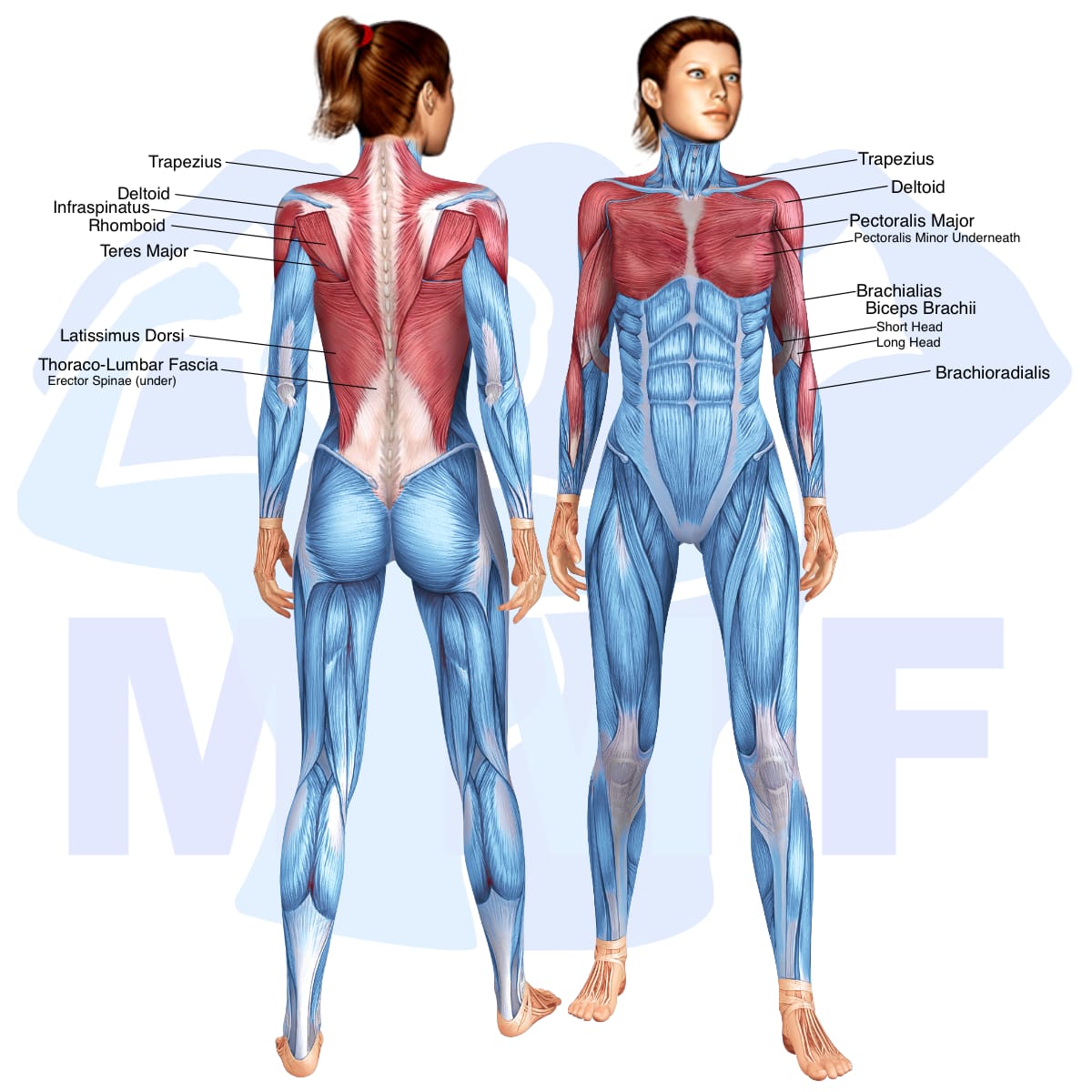
Benefits of Resistance Band Standing Rows
The Resistance Band Standing Rows exercise is an ideal choice for strengthening the posterior deltoids. This exercise requires standing with your feet hip-width apart and holding the resistance band in both hands at chest level. While keeping your core engaged, slowly pull the band towards your chest with your elbows bent and palms facing in. You should feel tension in your back and shoulders, particularly in the posterior deltoids. Not only does this exercise target the posterior deltoids, it also activates other important muscles such as the biceps, triceps, and rhomboids. With regular performance of this exercise, you can expect to improve shoulder strength, posture, and overall muscle tone.
Tips for Performing Resistance Band Standing Rows
If you want to attain the optimal benefits, adhere to these simple and easy tips. Most Importantly, if you would like to avert injuries, follow these tips.
- Use Multiple Bands To Raise The Workout. If you find that you can easily perform 12 or more reps every exercise, then you should to raise the level of resistance. You can either do this by elongating the band further at the outset of the action or by using more bands. The recommended technique is to add some more bands given that it is quickly repeatable to get the exact same resistance on every workout.
- Concentrate On How You Breath. With this and most workouts respiration is vital. You need to be exhaling out during your target muscle constriction and inhaling when the target muscles are expanding.
- Always Keep Your Abs Tight. For most exercises, you will need to reinforce your spine by flexing your abs to raise your inner pressure around your backbone.
Benefits and Tips Video
Frequent Mistakes To Avoid
You ought to stay clear of these very common mistakes to have solid form and muscle growth. Also
- Don’t have unmatched resistance on each side, or you will strengthen both sides with an imbalance.
- Don’t relax your abs. Tightening your abs protects your spinal column by maintaining your internal pressure.
- Avoid Using Too Little or Too Much Resistance. Not enough, and you will not be sufficiently using your primary muscle, too much, and you will probably cheat. Make certain you can conduct between 8-12 reps with good technique.
Find More Resistance Band Exercises Here
Variations and Complementary Exercises
There are a variety of ways to modify the Resistance Band Standing Rows exercise to make it more challenging, or to work similar muscles. Here are some variations, complementary, or alternative exercises to try:
Resistance Band Seated Rows
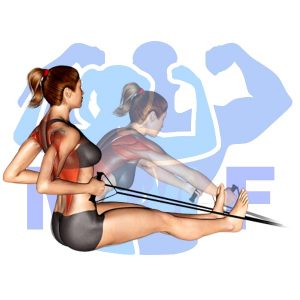
Resistance Band Seated Rows are an excellent complementary or alternative exercise to Resistance Band Standing Rows. This exercise focuses on building strength in the upper back and core by using a resistance band to pull your arms back and up while seated. It works the same muscles as standing rows, but with the added benefit of improving posture while stabilizing the spine. This exercise can be done anywhere, with no equipment required other than the band, making it an ideal choice for those who don’t have access to a gym. Additionally, it can be easily modified to increase or decrease intensity levels, allowing for a personalized fitness experience.
Resistance Band Face Pulls

Resistance Band Face Pulls are a great complementary exercise to Resistance Band Standing Rows. This exercise works the muscles in the back and shoulders, targeting the same areas as the Standing Rows. However, instead of working the muscles from a standing position, Resistance Band Face Pulls involve pulling the band towards your face from a kneeling or sitting position. This exercise works the muscles from a different angle and helps to improve mobility in the shoulder joint. It also helps to build strength in the back and shoulders, making it an ideal alternative or complementary exercise for Resistance Band Standing Rows.
Resistance Band Bent Over Shoulder Rows

Resistance Band Bent Over Shoulder Rows are a great complementary exercise to Resistance Band Standing Rows. This exercise works the back muscles differently than the standing rows, as it requires you to lean forward and use the bands to pull your elbows back. This exercise helps strengthen the muscles in the middle of your back that are not targeted when performing the standing rows. Additionally, it also helps to improve posture by strengthening the upper back muscles that support good posture. It is an excellent alternative exercise to resistance band standing rows and will help to add variety to your workout.
Check Out These Top Resistance Band Exercises
Resistance Band Bent Over Rows
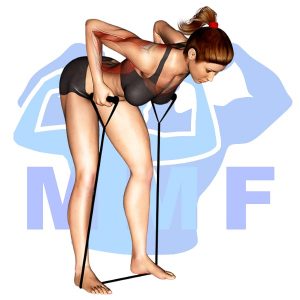
Resistance Band Bent Over Rows is a great complement to Resistance Band Standing Rows. This exercise works the same muscles as the Standing Rows, but from a different angle. By performing Bent Over Rows, you can target the same muscles from a different angle, helping to build strength and stability in the back muscles. The bent-over row also requires more core engagement than the standing row, making it an ideal exercise for strengthening the core and improving posture. Additionally, it helps to build muscular endurance, allowing you to increase your repetitions and time under tension while targeting the same muscles as the standing row.
Resistance Band Bent Over Rear Lateral Raises

Resistance Band Bent Over Rear Lateral Raises are a great complementary or alternative exercise for Resistance Band Standing Rows. This exercise targets the posterior deltoids, or back of the shoulder, and is a great way to add some variation to your workout routine. To perform this exercise, you start by standing with your feet hip-width apart and holding the resistance band in both hands. Bend at the waist and slightly hinge forward, keeping your back flat. With your arms extended, raise the band up and out to the sides of your body until they reach shoulder height. Lower your arms back down to the starting position and repeat. This exercise is a great way to strengthen the posterior deltoids and can be done anywhere with minimal equipment.
Resistance Band Straight Back Seated Rows

Resistance Band Straight Back Seated Rows is a great complementary or alternative exercise for Resistance Band Standing Rows. This exercise works the same muscles as the standing rows, focusing on the upper back, shoulders, and arms, but from a seated position. To perform this exercise, sit upright with your feet flat on the floor, holding the handles of the resistance band in each hand. Keeping your arms straight, pull the band towards your chest and squeeze your shoulder blades together. Hold for a few seconds and then slowly release back to the starting position. This exercise is great for people with limited mobility as it can be done from a seated position.
Find More Back Exercises Here
Opposing Complementary Exercises
To further strengthen your upper body and ensure your muscles are working in harmony, you can also include the following exercises in your workout routine. These exercises will provide balance to the muscles you are targeting with Resistance Band Standing Rows by working the opposing muscle groups.
Resistance Band Push Ups
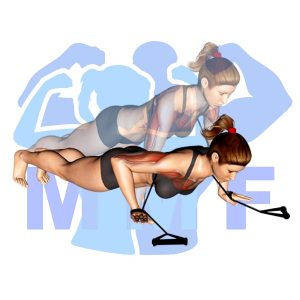
Resistance Band Push Ups are a great way to complement Resistance Band Standing Rows by using the opposing muscle group. By doing Resistance Band Push Ups, you are targeting the same muscles as Resistance Band Standing Rows, but in the opposite direction. This allows for a more balanced workout and a better overall development of the muscles. Additionally, Resistance Band Push Ups can be done anywhere with minimal equipment and space requirements, making them a great option for those who don’t have access to a gym or specialized equipment. This makes them an ideal exercise to combine with Resistance Band Standing Rows for a comprehensive workout.
Resistance Band Low Chest Flys

Resistance Band Low Chest Flys and Resistance Band Standing Rows are complementary exercises that work opposite muscle groups. Resistance Band Low Chest Flys target the chest, shoulder, and triceps muscles, while Resistance Band Standing Rows target the back, biceps, and shoulder muscles. By alternating between these two exercises, you can effectively target both the pushing and pulling muscles in your upper body to create a balanced workout.
Resistance Band High Chest Flys
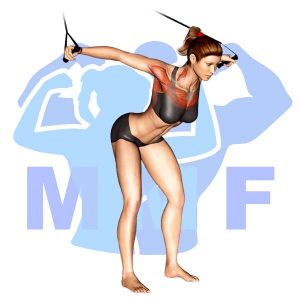
Resistance Band High Chest Flys are an excellent complement to Resistance Band Standing Rows. This exercise targets the pectoral muscles, which are the opposing muscle group to the back muscles used in Resistance Band Standing Rows. The band should be held in both hands with arms extended and a slight bend in the elbows. Then pull the band outwards and away from your chest, keeping your elbows slightly bent and your arms parallel to the floor. This move engages the chest muscles and strengthens them, providing balance to the back muscles strengthened by Resistance Band Standing Rows.
Build Your Back Strength with Resistance Band Rows Now!
To improve your posture and overall strength, it’s important to build up your back muscles. Resistance band rows are a great way to do this. By rowing with resistance bands, you can increase the resistance in the movement as you get stronger, and the bands provide a constant tension that works your muscles throughout the entire range of motion. By incorporating resistance band rows into your routine, you’ll see improved posture and upper body strength over time.
References: Wikipedia | ExRx.net | PubMed.gov | Comprehensive List of Back Resistance Band Exercises

